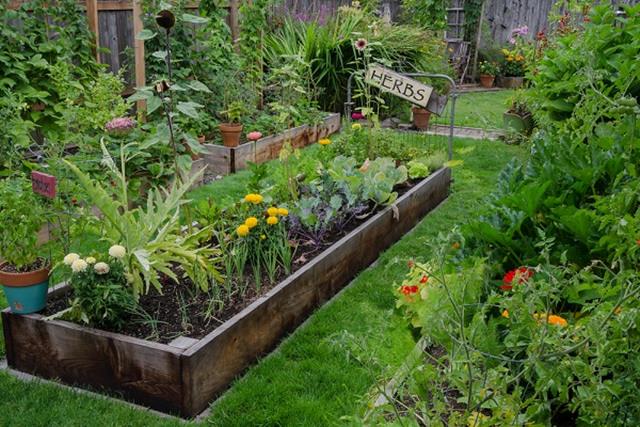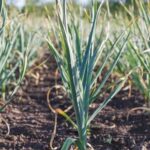Are you interested in starting a raised bed vegetable garden but not sure where to begin? Raised bed gardening is an excellent way to grow your favorite vegetables, herbs, and flowers while enjoying the benefits of improved soil drainage, better pest control, and easier maintenance. In this article, we will provide you with all the information you need to get started with raised bed vegetable gardening help.
Raised bed gardening involves growing plants in soil that is higher than the ground level, contained within a frame. This method offers several advantages over traditional in-ground gardening, including better control over soil composition and structure, improved drainage, and reduced strain on your back from less bending and kneeling. Whether you are a beginner or an experienced gardener, this comprehensive guide will walk you through the basics of raised bed vegetable gardening.
From selecting the right spot for your raised bed garden to choosing the best vegetables and ensuring proper soil composition and drainage, we will cover everything you need to know to build, maintain, and harvest a successful raised bed vegetable garden. Whether you have limited space or poor soil quality in your backyard, raised bed vegetable gardening can be a practical solution for producing fresh homegrown produce.
Read on for expert tips and advice on how to create a thriving raised bed garden that will provide bountiful harvests throughout the growing season.
Choosing the Right Location
When it comes to raised bed vegetable gardening help, choosing the right location for your garden is crucial. The success of your garden largely depends on where you decide to place it. Here are some tips for selecting the ideal spot for your raised bed garden:
1. Sunlight: Choose a location that receives at least 6-8 hours of direct sunlight each day. Most vegetables require ample sunlight to grow and thrive, so it’s essential to pick a sunny spot for your raised bed.
2. Accessibility: Consider the accessibility of the location. It should be easy to reach and maintain without too much effort. This is especially important if you plan to regularly tend to your garden and harvest your vegetables.
3. Soil Quality: Pay attention to the quality of the soil in the chosen location. It should be well-draining and fertile to support healthy plant growth. If the soil quality is poor, you may need to amend it with compost or other organic matter before constructing your raised bed.
4. Protection from Elements: Try to select a location that is sheltered from strong winds and extreme weather conditions, such as heavy rain or hail. A little protection can go a long way in maintaining the health of your plants.
By considering these factors when choosing the right location for your raised bed garden, you can set yourself up for success and ensure that your vegetables have the best possible environment in which to grow.
Building Your Raised Bed
When it comes to building a raised bed for your vegetable garden, there are several key steps to consider. Follow this step-by-step guide to help you construct a successful raised bed that will provide the ideal environment for your vegetables to thrive.
1. Choose the right materials: Decide whether you want to use wood, concrete blocks, or another material for your raised bed. Consider factors such as cost, durability, and aesthetics. Cedar and redwood are popular choices for wooden raised beds due to their natural resistance to decay.
2. Determine the size and shape: Measure the available space in your garden and determine the size and shape of your raised bed. Keep in mind that you should be able to easily reach all areas of the bed without stepping inside it, so it’s typically best to keep the width of the bed around 3-4 feet.
3. Construct the frame: Once you have gathered your materials and decided on the size and shape, begin constructing the frame of your raised bed. If using wood, assemble the boards using galvanized screws or nails. Ensure that the corners are square and level before proceeding.
4. Fill with soil: After your raised bed frame is constructed, fill it with a high-quality soil mix suitable for vegetable gardening. This mix should be well-draining and rich in organic matter to provide optimal growing conditions for your plants.
By following these simple steps, you can create a sturdy and functional raised bed for your vegetable garden that will set the stage for successful and bountiful harvests.
Selecting the Best Vegetables
When it comes to selecting the best vegetables for a raised bed garden, there are a few key factors to consider. Raised bed vegetable gardening offers many advantages, such as better soil drainage, improved control over soil quality, and reduced risk of soil compaction. However, not all vegetables are well-suited for this type of gardening. Some vegetables thrive in raised beds, while others may struggle to reach their full potential.
Vegetables That Thrive in Raised Beds
Certain vegetables are particularly well-suited for raised bed gardening due to their adaptability to different types of soil and their ability to thrive in confined spaces. Examples of vegetables that do well in raised beds include tomatoes, peppers, lettuce, spinach, carrots, radishes, and herbs such as basil and parsley. These plants have shallow root systems or can benefit from the improved drainage and aeration provided by the raised bed structure.
Factors to Consider When Choosing Vegetables
When choosing what vegetables to grow in your raised bed garden, it’s important to consider several factors. First, assess the space available in your raised bed and choose crops that will fit comfortably without overcrowding. Additionally, take into account the sun exposure in your chosen location as some crops may require more sunlight than others. Another consideration is the desired yield – some crops like tomatoes or zucchini may produce a large harvest from just one or two plants.
Tips for Choosing the Right Vegetables
To make the most of your raised bed vegetable garden, select a diverse range of crops that will provide you with a variety of fresh produce throughout the growing season. Think about which vegetables your family enjoys eating and prioritize those when making your selections.
Additionally, consider incorporating companion planting techniques by choosing vegetables that complement each other and help deter pests or improve growth when planted together. By carefully considering these factors and tips when selecting your vegetables for a raised bed garden, you can set yourself up for a successful and bountiful harvest.
Soil and Drainage
One of the most critical aspects of successful raised bed vegetable gardening is ensuring that you have good soil and proper drainage. The soil in your raised bed should be well-draining, nutrient-rich, and loose enough to promote healthy root growth. It’s essential to create an environment in which your vegetables can thrive, and this starts with the right soil composition.
When it comes to selecting soil for your raised bed garden, consider using a mix of topsoil, compost, and organic matter. This combination provides the necessary nutrients for your plants while also promoting good drainage. Avoid using soil from your yard as it may contain weed seeds or pathogens that can harm your vegetables.
Proper drainage is equally important for the success of your raised bed garden. Without adequate drainage, water can accumulate around the roots of your plants, leading to root rot and other issues.
To improve drainage in your raised bed, consider adding a layer of gravel or coarse sand at the bottom before filling it with soil. Additionally, be mindful of any slope or grade in the location where you place your raised bed – ensuring that excess water can drain away from the garden will help prevent water-logging.
| Aspect | Importance |
|---|---|
| Soil Composition | This ensures that the plants receive proper nutrients |
| Drainage | Adequate drainage prevents water accumulation around roots leading to rotting |
Watering and Maintenance
Proper Watering Techniques
When it comes to raised bed vegetable gardening, proper watering is essential for the success of your garden. Unlike traditional gardens, raised beds have better drainage, which means they may require more frequent watering, especially during hot and dry periods. One effective way to water your raised bed garden is through drip irrigation or soaker hoses.
These methods deliver water directly to the base of the plants, minimizing evaporation and ensuring that the roots receive adequate moisture. Another technique is mulching, which can help retain soil moisture and reduce the frequency of watering.
Monitoring and Maintenance
Regular monitoring and maintenance are crucial for the health of your raised bed vegetable garden. This includes checking for any signs of wilting or stressed plants, as well as keeping an eye out for pests and diseases. Periodically inspecting the condition of your raised bed structure is also important to address any maintenance issues such as loose boards or deteriorating materials. Additionally, removing weeds regularly will prevent them from competing with your vegetables for water and nutrients.
Seasonal Considerations
Throughout the growing season, it’s important to adjust your watering and maintenance practices based on changing weather conditions. During periods of high temperatures or drought, you may need to increase the frequency of watering to compensate for evaporation.
Conversely, during cooler and wetter times, you may need to scale back on watering to avoid waterlogged soil. It’s also essential to plan for long-term maintenance tasks such as replacing old soil at the end of each growing season and preparing the bed for winter if you live in a region with cold temperatures.
By following these tips for watering and maintenance in your raised bed vegetable garden, you can ensure that your plants receive the care they need to thrive and produce a bountiful harvest throughout the season.
Pest and Disease Control
When it comes to raised bed vegetable gardening, one of the key challenges that gardeners face is dealing with pests and diseases that can wreak havoc on their crops. However, with the right strategies in place, it is possible to prevent and manage these issues effectively.
One of the best ways to prevent pests and diseases in your raised bed garden is to start with healthy soil. Good soil health can help plants resist diseases and pests, so be sure to use high-quality compost and organic matter when filling your raised bed. Additionally, rotating your crops each season can help reduce the risk of disease buildup in the soil.
In terms of managing pests, there are several natural solutions that can be employed in a raised bed garden. For example, introducing beneficial insects such as ladybugs or lacewings can help control aphids and other harmful pests. Additionally, using physical barriers like row covers or netting can protect your crops from unwanted visitors.
For more severe pest infestations, organic pesticides that are safe for vegetable gardens can be used as a last resort. By being proactive and attentive to the needs of your plants, you can effectively prevent and manage pests and diseases in your raised bed vegetable garden.
Harvesting and Succession Planting
In conclusion, raised bed vegetable gardening is a fantastic option for anyone looking to grow their own fresh produce at home. The benefits of raised bed gardening, such as improved soil quality, better drainage, and fewer weeds, make it an attractive choice for both experienced gardeners and beginners. By following the steps outlined in this article, you can create a successful raised bed garden and enjoy a bountiful harvest of delicious vegetables.
Once your raised bed garden is thriving with healthy plants, it’s important to understand how to properly harvest your crops and plan for future plantings. By incorporating succession planting into your gardening strategy, you can maximize the potential of your garden throughout the growing season. This involves planting new crops as soon as one harvest ends, allowing you to continually enjoy fresh produce from your garden.
Additionally, by regularly harvesting your crops, you encourage further growth and productivity in your garden. Remember to keep an eye on the maturity of your vegetables and harvest them at their peak ripeness to enjoy the best flavor and nutrition. With proper care and attention, raised bed vegetable gardening can provide you with a plentiful supply of fresh, homegrown produce to enjoy throughout the year.
Frequently Asked Questions
What Should I Put at the Bottom of a Raised Garden Bed?
At the bottom of a raised garden bed, it’s important to put a layer of cardboard or landscape fabric to prevent weeds from growing up into the bed. This will also help maintain good drainage for the soil.
How Do You Maintain a Raised Bed Vegetable Garden?
To maintain a raised bed vegetable garden, regular watering, weeding, and fertilizing are essential. It’s important to keep an eye on pests and diseases and address them promptly. Rotating crops yearly can also help prevent soil depletion.
How Do I Improve the Soil in My Raised Vegetable Bed?
Improving the soil in a raised vegetable bed can be done by adding compost, aged manure, or other organic matter to enrich the soil. Testing the pH level and adjusting it as needed can also improve soil quality for healthy plant growth.

If you’re looking to get into vegetable gardening, or are just looking for some tips on how to make your current garden better, then you’ve come to the right place! My name is Ethel and I have been gardening for years. In this blog, I’m going to share with you some of my best tips on how to create a successful vegetable garden.





